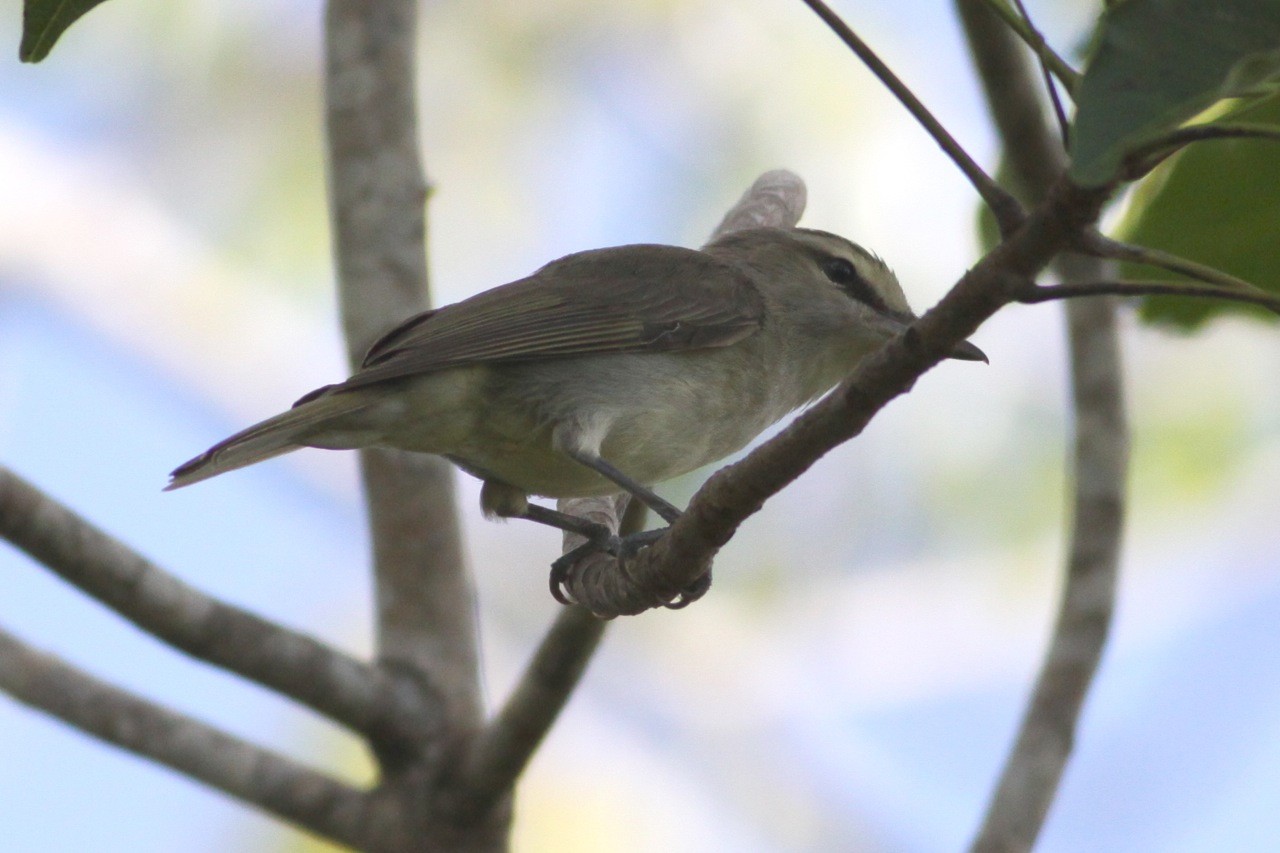Yucatan Vireo
A species of Vireos Scientific name : Vireo magister Genus : Vireos
Yucatan Vireo, A species of Vireos
Botanical name: Vireo magister
Genus: Vireos
Content
Description General Info
Description
The Yucatan vireo (Vireo magister) is a species of bird in the family Vireonidae. Closely related to the red-eyed vireo, its plumage a duller overall. It measures 14.5–15.5 cm (5.7–6.1 in). It has a stout, hooked bill that is gray, paler at the base. A broad white eyebrow contrasts with a dull gray crown. A broad dark stripe runs through the brown eye. Upperparts are a dull olive gray. Throat and underparts are whitish. The wings and tail are dark with olive green margins. Legs and feet are grayish blue. Its natural habitats are subtropical or tropical dry forests, subtropical or tropical mangrove forests, and heavily degraded former forest. It is found in Belize, Honduras, Mexico, as well as on Grand Cayman. There is a well-documented record from High Island, Texas, in 1984, but this is the only record for the United States. Four subspecies are recognized, the large number reflecting its distribution amongst far-flung islands and a small strip of the mainland. Vireo magister magister – (Baird, SF, 1871): nominate, found in southeastern Mexico and Belize Vireo magister decoloratus – (Phillips, AR, 1991): found on islands off of northern and central Belize Vireo magister stilesi – (Phillips, AR, 1991): found on islands off of southern Belize and northern Honduras Vireo magister caymanensis – Cory, 1887: found on Grand Cayman Island 
Size
15 cm
Nest Placement
Tree
Feeding Habits
Yucatan Vireo primarily feasts on a variety of fruits. Known for its methodical foraging, this species actively searches foliage for food. It exhibits unique preferences for certain fruits, showcasing dietary adaptations for optimal nutrition intake.
Habitat
The yucatan Vireo primarily resides in a variety of wooded environments, ranging from mangroves and mixed woodlands to littoral forests. It is also found in humid and semi-humid scrubby woodlands and thickets growing on pine ridges. The species shows a preference for limestone-associated forests, particularly during the winter months. These habitats span across broader geographical regions that include areas with subtropical or tropical climates.
Dite type
Insectivorous
General Info
Feeding Habits
Bird food type
Bird Feeder Type

Small Hopper

Platform
Species Status
Not globally threatened.
